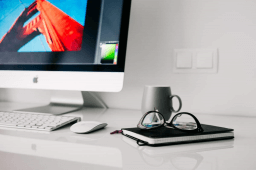Ratification Day
Ratification Day is observed next on Wednesday, January 14th, 2026 (39 days from today).

Happy Ratification day! Every year, the United States celebrates January 14 as the “Ratification Day ", to commemorate the ratification of the Treaty of Paris by US Continental Congress, ending the Revolutionary War and established the United States became an independence nation.
History of Ratification Day
On January 14, 1784, the Congress of the Confederation, or the Continental Congress, ratified the Treaty of Paris, which officially ended the American Revolutionary War and made the United States of America become a sovereign state. This historic event and its anniversary annually is known as Ratification Day. There was a long way between the end of hostilities of the Revolutionary War and this point, and the treaty still had to be ratified in Paris after Ratification Day, but it was on this day that the United States Congress officially ended the war.
On April 11, 1783, Parliament issued a proclamation declaring a "cease of arms" with Great Britain, which was approved by Parliament four days later. Representatives of both Britain and America signed the Treaty of Paris on September 3, 1783, which declared that the United States was "free, sovereign, and independent." Moreover, it indicated that Britain would withdraw its troops from occupied American territory in a timely manner, that Britain had agreed to boundaries that would double the size of the United States' territory, and that the United States would take restored access to cod and cod in the North Atlantic that had been captured by Britain during the war. Although the treaty has been signed, it needs to be ratified by Parliament as well as the UK in order to become official.
On December 13, 1783, Congress met at the Maryland State House in Annapolis, Maryland, to pass the Treaty of Paris. Under the Articles of Confederation, the law of the land at the time, a two-thirds majority was required to ratify the treaty, meaning nine out of thirteen states had to ratify it. At least two delegates from each state are required for that state to vote on the treaty. The two countries would exchange ratifications on March 3, 1784.
The winter of 1783-1984 was particularly brutal, with extreme cold, ice storms, and blizzards, allowing only seven of the thirteen states to be able to convene the necessary number of delegates until mid-January. Only one delegate from New Hampshire and South Carolina got there, so they couldn't vote. No delegates from New York, Connecticut, New Jersey and Georgia were present, so they could not vote either.
One faction among the delegates thought that the current seven states could ratify the treaty, since Articles of Federation argued that a two-thirds majority was required to join the treaty, not ratify it. It seems unlikely that delegates from nine states will arrive in time to ratify it, and the faction thinks they should continue with seven states present. The other faction, led by Thomas Jefferson, argued that all nine states needed to be present for ratification. They assumed that if they did not follow this, Britain would find out and then have an excuse to nullify the treaty.
Jefferson headed a compromise committee that included members of both camps. They decided that if only seven states were present, Congress would pass a resolution stating that the states present unanimously supported ratification but were uncertain about their ability to ratify only seven states. This will be sent to Benjamin Franklin, the US Ambassador to France, who will ask the UK for a three-month delay so that the nine states can ratify it. But if the three-month delay is not approved, Franklin will present seven states' ratification.
This compromise became controversial, when the delegates arrived at the last moment. On January 13, two delegates from Connecticut, granted that state the right to vote on the treaty, bringing the total number of voting states to eight. One delegate was also from New Jersey. The next day, Richard Beresford, the representative of South Carolina arrived and the vote could be made. January 17, 1784 is Ratification Day, when the United States Congress ratified the Treaty of Paris.
The Declaration of Peace, written by Thomas Jefferson, was also adopted during the day. It included a reprint of the peace treaty as well as the words "demanding and ordering" all those in power and the country's citizens to obey it. A resolution was also passed encouraging state legislatures to pursue a conciliatory approach to loyalists.
Three packets including a copy of the ratified treaty, the Declaration of Peace and the resolution for the state legislatures were sent to Paris by separate mails. Colonels Josiah Harmar and David S. Franks brought separate packets to New York City. They left port on separate ships, but could not board until February 21, because of an ice barrier between Long Island and Staten Island. This means they certainly won't make it to Paris before the March 3 deadline. Firstly, Harmar arrived in Europe on March 25, at L'Orient, a naval base in Brittany, France. He set out for Paris and traveled day and night, arriving at Benjamin Franklin's residence in Passy, on the outskirts of the city, on March 29, and gave him the documents of ratification.
Although the treaty's ratification came after the March 3 deadline, the UK accepted the explanation that there had been a delay because of inclement weather. King George III then signed British ratifications on April 9. Ratifications were exchanged on May 12, 1784, officially bringing the Treaty of Paris into force. Benjamin Franklin sent the copy of British to Congress later.
Implementation of the Treaty of Paris depends on ratification by the United States Congress, a goal that was accomplished on January 14, 1784. Today, on its anniversary, we hold Ratification Day. The old Senate chamber in the Maryland State Building, where the ratification took place, looks exactly as it did on that historic day, and each year on the anniversary, a ceremony is held there. At the time of ratification, the flag of the United States had twelve round stars and a thirteenth star inside the circle. This flag is now flown on the state building and on other buildings in Annapolis on Ratification Day.
How to Observe Ratification Day
- Read the document of the Declaration of Peace, which contains the text of the Treaty of Paris.
- Visit the Maryland State House, which hosts the annual event. Make sure to stop by the old Senate Chamber, where the ratification of the treaty took place.
- Fly the same flag that flew over the state on ratification day and still fly there on ratification day every year.
- Visit the Museum of the American Revolution.
Observed
Ratification Day has been observed annually on January 14th.Dates
Sunday, January 14th, 2024
Tuesday, January 14th, 2025
Wednesday, January 14th, 2026
Thursday, January 14th, 2027
Friday, January 14th, 2028


